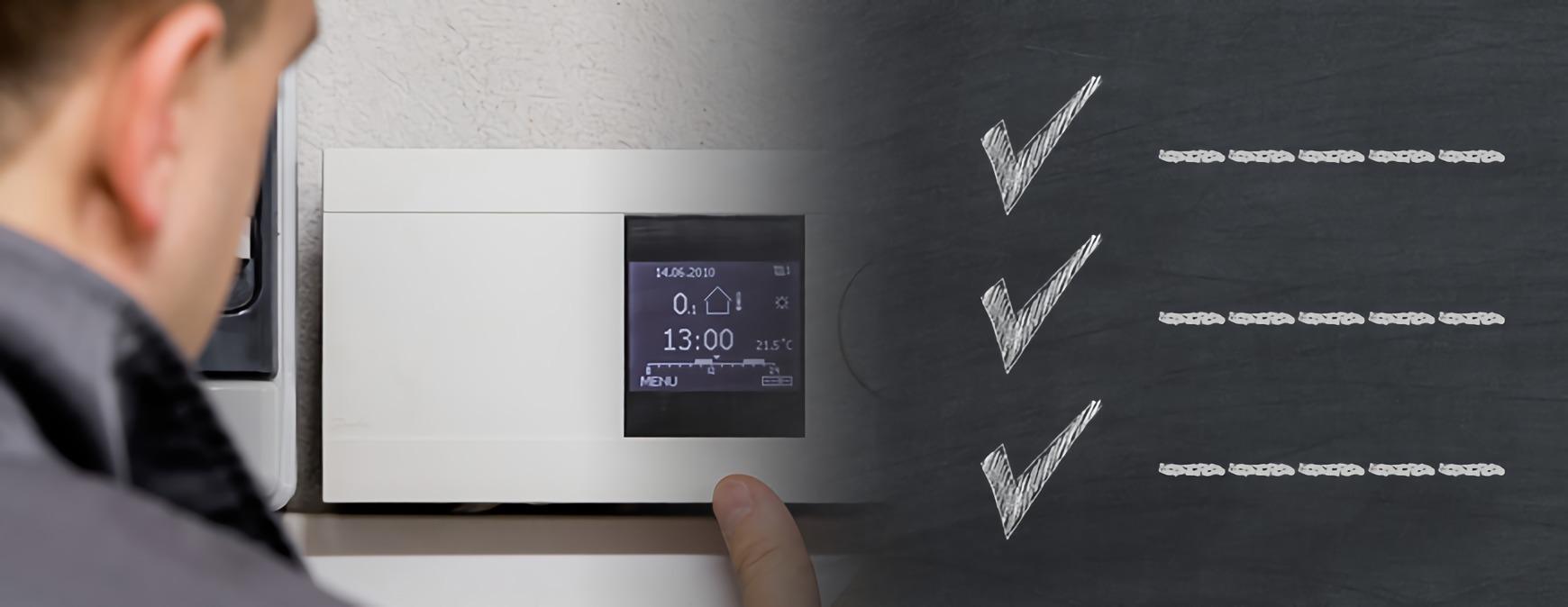RSI is a Great Training Option for Everyone
Learn more about how we can prepare you to advance your career.
Winter is coming and that means it is time to check if your HVAC system is ready to handle the cooling temperatures. Homeowners who make sure that their HVAC units are maintained can lessen their chances of having costlier problems should the units stop working properly. Fall is the ideal time to have a contractor with HVAC training perform a pre-season check-up and confirm that your heating system is in working order.
Here are the areas a HVAC technician will check:
General:
| Thermostat settings: The right thermostat settings help maintain a comfortable temperature while also saving energy. |
| Electrical connections: If electrical connections are defective, they may damage HVAC equipment or make it hazardous to operate. Motors should have the correct voltage and current. |
| Condensate drain: Should the condensate drain be plugged, it may lead to water damage, musty air due to mold 1, and increased humidity in the house. |
| System controls: The controls work properly if the system starts, operates, and turns off normally. Malfunctioning system controls can become a safety issue. |
| Moving parts: If moving parts are not properly lubricated, they can cause friction in the motors (which in turn results in greater energy use). 2 |
| Clean air filter: A clean air filter is crucial for an efficient airflow indoors. Air filters should be cleaned or switched out regularly. |
| Humidifier: For a humidifier to operate effectively, it must be clean and free from mold as well as debris. 3 |
Heating:
| Gas/oil connections: If the gas or oil connections are faulty, they can cause health issues or become a fire hazard. |
| Gas pressure: Measuring the gas pressure is vital for ensuring that the furnace works safely and efficiently at the right firing rate. 4 |
| Burner combustion: A dirty burner can lead to faulty burner operation which may result in energy waste or safety issues. |
| Heat exchanger: Similarly, a damaged heat exchanger can impact energy efficiency or operational safety. |
| Pilot light: The pilot light needs to be kept clean to work correctly. This will save energy and extend furnace life. 5 |
| Furnace thermostat: If the furnace thermostat fails to work, the furnace may not generate any heat. The thermostat needs to be checked, whether it is a natural gas, oil, or propane furnace, before winter. 6 |
One thing homeowners can do is check batteries in carbon monoxide detectors to identify any furnace problems as early as possible. Also, remove vegetation and other clutter from the heat pump, if unit is in an accessible place, to allow proper airflow inside. For more tips on how to prepare a home for winter, check out our Winter Heating HVAC Checklist For Homeowners.
Additional HVAC Maintenance Checklists and Guides
Additional Sources
1 – https://www.ahs.com/home-matters/repair-maintenance/how-to-clean-your-air-conditioner-condensate-drain-line
2 – https://www.energystar.gov/index.cfm?c=heat_cool.pr_maintenance
3 – https://modernize.com/home-ideas/12646/comprehensive-hvac-winter-prep-checklist
4 – http://hvacrfundamentals.blogspot.com/2013/10/checking-gas-pressure.html
5 – https://www.thespruce.com/inspect-furnace-pilot-light-4132345
6 – http://homeguides.sfgate.com/test-thermostat-gas-furnace-25659.html
This blog has been labeled as archived as it may no longer contain the most up-to-date data. For a list of all current blog posts, please visit our blog homepage at https://www.rsi.edu/blog/




